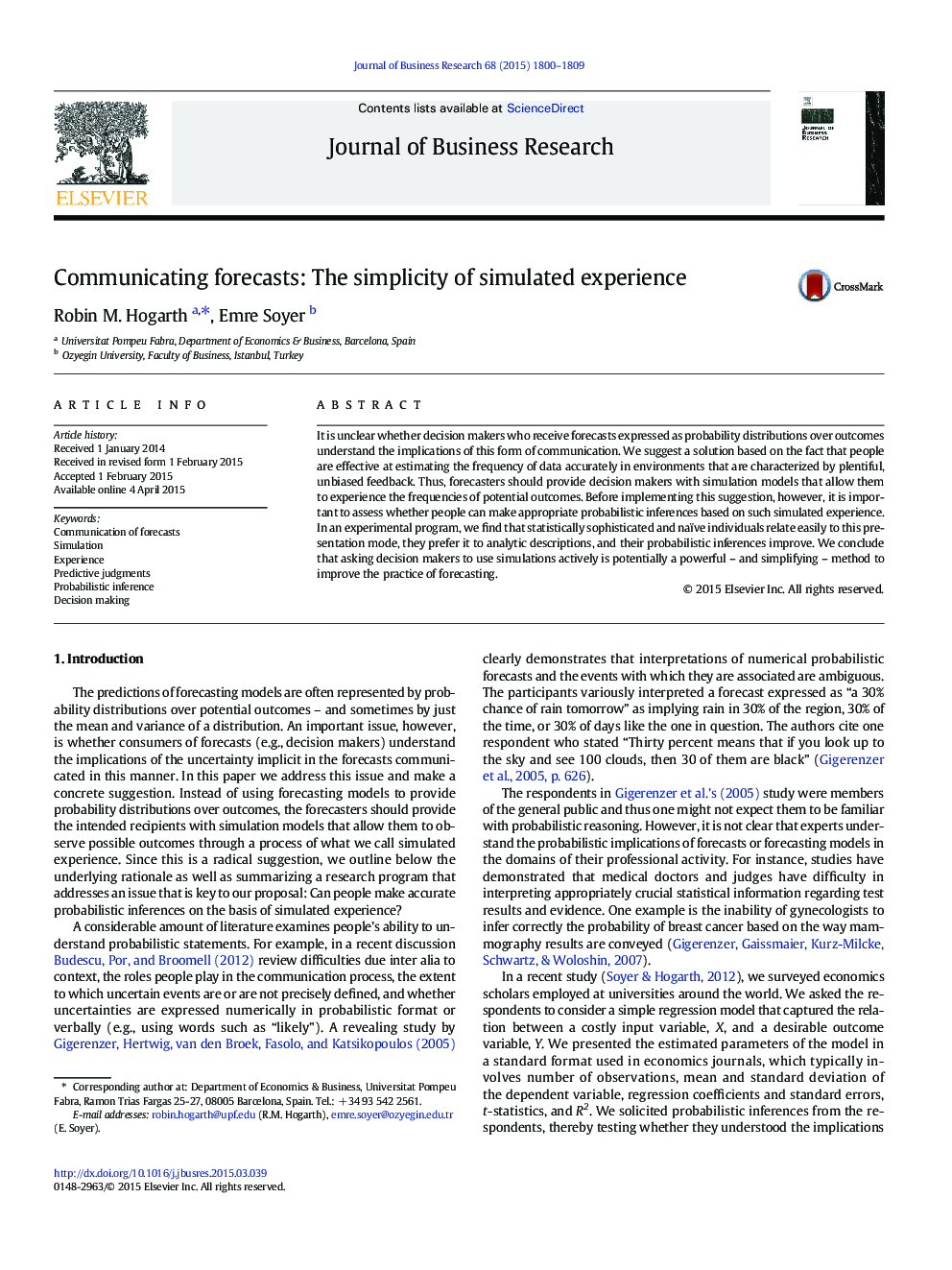| Article ID | Journal | Published Year | Pages | File Type |
|---|---|---|---|---|
| 10492992 | Journal of Business Research | 2015 | 10 Pages |
Abstract
It is unclear whether decision makers who receive forecasts expressed as probability distributions over outcomes understand the implications of this form of communication. We suggest a solution based on the fact that people are effective at estimating the frequency of data accurately in environments that are characterized by plentiful, unbiased feedback. Thus, forecasters should provide decision makers with simulation models that allow them to experience the frequencies of potential outcomes. Before implementing this suggestion, however, it is important to assess whether people can make appropriate probabilistic inferences based on such simulated experience. In an experimental program, we find that statistically sophisticated and naïve individuals relate easily to this presentation mode, they prefer it to analytic descriptions, and their probabilistic inferences improve. We conclude that asking decision makers to use simulations actively is potentially a powerful - and simplifying - method to improve the practice of forecasting.
Related Topics
Social Sciences and Humanities
Business, Management and Accounting
Business and International Management
Authors
Robin M. Hogarth, Emre Soyer,
